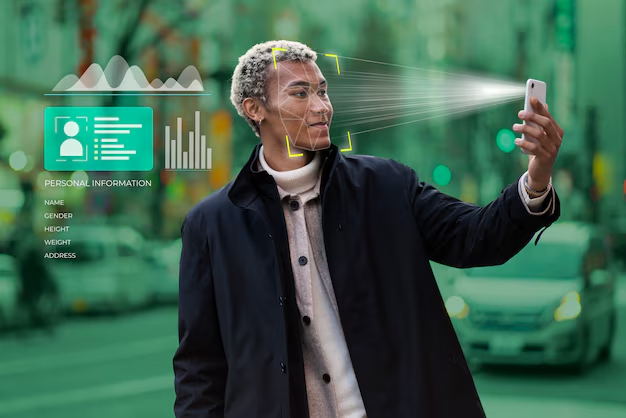Introduction
The digital era has reached a turning point. Technology is no longer a supporting tool but a driving force that defines how businesses grow, how people connect, and how societies evolve. Among the many innovations shaping this landscape, AI insights dualmedia stands out as a concept that brings together the power of artificial intelligence and the influence of multi-platform media.
It is not only a technical term. It represents a new way of seeing, analysing, and interacting with the world. It blends intelligence with creativity, automation with human touch, and data with storytelling. This article explores its meaning, applications, and the transformative impact it has across industries and everyday life.
The Meaning Behind the Concept
AI insights dualmedia suggests the integration of two or more channels that work together to deliver messages, content, or strategies. When combined with AI, it creates a framework that allows machines to analyse human behaviour, predict outcomes, and deliver experiences across multiple digital platforms at once.
This means that instead of treating each channel—such as social media, websites, or email campaigns—as separate, they are connected by intelligence. Data from one channel fuels the performance of another, creating a cycle of continuous learning and improvement.
Why This Approach Matters
In the past, businesses could rely on simple strategies: a billboard, a TV ad, or a website. Today, audiences are fragmented across countless platforms. A consumer may scroll through Instagram while watching YouTube, then search on Google before making a purchase.
Without a connected strategy, businesses lose opportunities. AI insights dualmedia ensures every interaction counts. It learns from behaviour, adapts content, and makes sure the message reaches the audience in the right place at the right time.
The result is not just marketing—it is relevance. And in the modern digital economy, relevance is the most powerful currency.
Emotional Connection and AI
Artificial intelligence is often seen as mechanical and cold. But in reality, it can create deeper emotional connections. By studying user behaviour, preferences, and responses, AI helps shape messages that feel personal.
Imagine a customer browsing for shoes. Instead of receiving generic ads, they are shown exactly what they want, styled with outfits similar to their taste. The emotional impact is powerful: the customer feels understood.
This is the strength of AI in dual-media strategies. It makes people feel like the message was designed for them alone.
Real-World Applications
The applications stretch across industries, from retail to healthcare.
- In retail, AI-driven campaigns predict shopping habits and suggest products before customers even search for them.
- In healthcare, dual-media platforms educate patients across different channels while AI tracks engagement to improve awareness campaigns.
- In education, AI insights personalise learning experiences, delivering lessons through videos, texts, and interactive tools.
- In finance, banks use multi-channel intelligence to guide customers with security updates, fraud alerts, and personalised investment tips.
- Each industry proves the same point: intelligence combined with multiple media platforms creates an impact that no single channel could achieve alone.
Challenges Along the Path
Innovation is never free of challenges. Organisations adopting this approach often face barriers like cost, data privacy concerns, and the complexity of integrating different platforms.
For example, collecting user data to personalise experiences can raise ethical questions. Businesses must balance personalisation with respect for privacy. At the same time, training employees to use new systems requires investment in skills and time.
Yet, each challenge opens the door to long-term strength. Companies that face these issues directly often emerge with stronger, more secure, and more trusted systems.
Storytelling in the Age of AI
Storytelling remains one of humanity’s oldest traditions. Even as technology advances, the need for stories does not disappear. In fact, AI amplifies it.
Through dual media, a single story can be told across platforms in different ways. A video may share the emotional journey, while an article delivers the technical details. AI ensures these variations are consistent and targeted, creating a complete experience.
The power lies in emotional storytelling that feels natural, even though advanced systems are working behind the scenes to guide it.
Steps Toward Implementation
Companies interested in this framework must approach it with patience and clarity.
First, they must understand their audience deeply. AI can only work with the data it receives. If businesses do not invest in knowing who they serve, the system cannot personalise effectively.
Second, they must connect their platforms. Websites, social media, apps, and customer service must not function as separate islands. Integration is the key to intelligence.
Third, they must measure outcomes regularly. AI can learn, but it must be guided by goals such as engagement, conversions, or brand loyalty.
Human and Machine Collaboration
A common misconception is that AI will replace humans entirely. But in dualmedia, the real power comes from collaboration. Machines analyse faster, but humans bring creativity, empathy, and cultural understanding.
For instance, AI may identify that a group of customers responds well to a particular ad. But humans are needed to craft the message in a way that resonates emotionally. This partnership is what ensures long-term success.
Case Studies and Examples of AI Insights Dualmedia
Consider a global brand launching a new product. Instead of running separate campaigns on different platforms, they adopt AI-driven dual media. The AI learns from Instagram engagement, applies those insights to YouTube ads, and adjusts website content based on click behaviour.
The results are striking. The campaign costs less, reaches more people, and creates higher engagement because each channel feeds the other with intelligence.
Smaller businesses see benefits too. A local café might use AI to track customer behaviour on social media, then send personalised email offers that encourage repeat visits. Even without massive budgets, the framework proves powerful.
The Future of AI and Dualmedia
Looking ahead, the possibilities seem limitless. With advancements in machine learning, personalisation will become even sharper. Virtual reality may join as a channel in the dual-media system. Voice assistants will become part of the conversation.
More importantly, as consumers demand transparency, businesses will need to use AI responsibly. Ethical AI will become as important as effective AI. Those who balance power with responsibility will win trust in the digital future.
Beyond Business: Everyday Life
This framework not only affects businesses. It impacts individuals daily. From Netflix recommendations to personalised workout apps, people already live within dual-media ecosystems powered by AI.
When you watch a video on YouTube, scroll through TikTok, or shop online, AI connects these actions into insights. That is why the ads you see, the articles you read, and the products you buy feel increasingly personal.
This interconnected reality will only grow stronger. For everyday people, it means convenience and personalisation. For businesses, it means opportunities and responsibility.
Conclusion
AI Insights Dualmedia represents more than a technological advance. It is a cultural shift, blending intelligence with communication, analysis with emotion, and machines with human creativity.
It changes how businesses speak, how consumers respond, and how industries evolve. It challenges us to think bigger, act faster, and connect deeper.
The future of digital success lies in strategies that are not only smart but also human-centred. With AI guiding dualmedia strategy, the digital age becomes more personal, more connected, and more meaningful.







